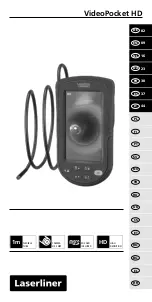
Page 22
The 30VDC is also supplied to the voltage divider R106 & R105,
and fed to the emitter follower Q101, the emitter output of which is
5.5VDC. Q101 is used as a voltage regulator and in conjunction
with C100B provides the filtering for the 5.5VDC.
2–8–2 PUSH BUTTON CIRCUITS
(See Figure 5–4)
One side of each push button is connected through R200, 2.2KΩ
resistor, to the 15VDC supply. The 15VDC is available to the push
buttons at all times, and if one is depressed at any time, that
particular voice will appear at the output. When any of the push
buttons are depressed, that button applies 15VDC to the base
input of a phase shift oscillator
For example, if the BLOCK push button is depressed, 15VDC is
applied to the junction of R100B and capacitor C100B. This signal
is differentiated by C100B and the resulting pulse is fed through
D100B and R105 to the base of Q100B, turning it on. This signal is
fed back to the base, inverted by the phase shift network C103B,
C102B, C104B, R106B, and R107B, and will be regenerative
for a period of time determined by R100B, C100B, and R101B.
The decay time of the collector output depends upon the values
of C101B, R105B and R102B. The output is coupled through
capacitor C105B, resistor R104B, and capacitor C120 to the base
of amplifier stage Q107. After amplification by Q107 and Q105, it is
connected to R203, the volume control. TOM-TOM, BONGO, and
CLAVES are similar in operation. The frequencies of the oscillators
are determined by the values of the components in the phase shift
network.
When the BRUSH push button is depressed, +15VDC is supplied
to the junction of R116 and C111, and this supplies bias through
D102 to the base of Q103, turning “on” the one shot multi-vibrator
stage, Q103 and Q104 for one complete cycle.
The Brush Gate transistor Q105 is turned “on” for a period
determined by C113 and R120 of the multi-vibrator stage. This
applies positive bias through R123, D104, and R124 to base of
Q105, turning on Q105 and allowing white noise to appear on
collector of Q105, tuned by C115 and L101. This signal is then
routed through C117 and output level control R126 and R127 to
hiss amplifier Q106.
2–8–3 LOWER MANUAL KEYING CIRCUITS
(See Figure 5–4)
The lower manual buss line is connected through C124 and the
base of Q109, which is a pulse amplifier stage. Re sistor R]47
provides base bias to the stage, so that with no key depressed,
the collector is at approximately 4.5VDC. C124 and R145 are a
differentiating network that puts a pulse on the base of Q109. This
pulse is amplified by Q109, and the collector of Q109 instanta-
neously rises from 4.5VDC to approximately 11VDC. This change
is routed through R149 to the base of Q110, which at an emitter
voltage of 5.5VDC and base bias of 4.5VDC was “off”. With 11VDC
on its base, Q110 turns “on”, and its collector, which was at 15VDC
drops to 5.5VDC.
This change is coupled through C126 and R153 to the base of
Q111, a PNP which has been biased “off” through R152 and Rl53.
The change in bias turns ‘”on” Q111 and the collector has an
instantaneous output of +15VDC for about 2 milliseconds duration.
This trigger pulse is defined as the lower manual trigger pulse. The
pulse is routed through whichever LOWER tabs are “on” to trigger
the selected voices. Output is obtained as described in
2–8–4 PEDAL KEYING CIRCUIT
(See Figure 5–4)
A signal of approximately 75mv P–P from the pedal keyboard is
connected to the input T4. The first two stages using transistors
Q1 & Q2 are basically ampli fiers providing a +13VDC square
wave pulse for each input cycle. The first +13VDC square wave
pulse appearing on transistor Q2 collector turns on Q4, providing
a +13VDC pulse at output terminal T11. At the same time C4 is
Summary of Contents for L-100 Series
Page 1: ......
Page 6: ......
Page 9: ...Page 9 Figure 1 4 Block Diagram L 100 Series Figure 1 5 Typical Tone Generator...
Page 38: ...Page 38 This page intentionally left blank...
Page 44: ...Page 44 Figure 5 7 Wiring Diagram L 100 Organ...
Page 45: ...Page 45 Figure 5 8 Wiring Diagram L100 1 and L 100 2 Organs...
Page 46: ...Page 46 Figure 5 9 Wiring Diagram L 200 Organ...
Page 49: ...Page 49 Figure 5 13 Parts Layout AO 41 Vibrato Amplifier...
Page 50: ...Page 50 Figure 5 14 Parts Layout AO 47 126 000023 Vibrato Amplifier...
Page 51: ...Page 51 Figure 5 14A Comparison Between AO 41 and AO 47 Vibrato Amplifiers...
Page 52: ...Page 52 Figure 5 15 Parts Layout AO 42 117 000019 Percussion Amplifier...
Page 53: ...Page 53 Figure 5 16 Parts Layout AO 43 126 000017 Power Amplifier...
Page 54: ...Page 54 Figure 5 17 Power Amplifier Fuse Location Canadian 101 000130...
















































